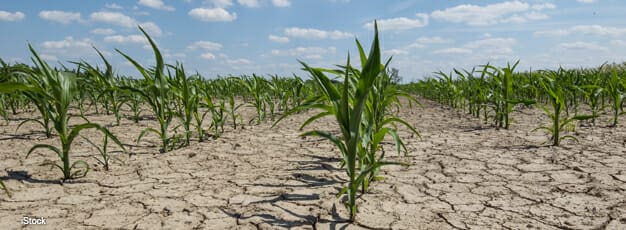Drought is the leading driver of production risk in U.S. agriculture. Although flooding, early frosts, pests, and other risk factors pose major challenges to farmers, no other source of production risk is as nationally significant as drought in terms of lost agricultural production and income. A major drought can reduce crop yields, lead farmers to cut back planted or harvested acreage, reduce livestock producthttps://www.h2oiq.org/?p=6729&preview=trueivity, and increase costs of production inputs such as animal feed or irrigation water.
In 2012, the U.S. Department of Agriculture (USDA) declared more than two-thirds of counties in the United States drought disaster areas. This was the most severe and extensive U.S. drought in over 50 years, and it underscored the far-reaching role that drought can play in agricultural production and policy.
At any given time, some portion of the country faces drought conditions. In recent years, large areas of the United States have experienced prolonged drought, with significant impacts across regional agricultural sectors. For example, the 2012 drought affected livestock, corn, and soybean producers of the High Plains and Midwest regions. From 2013 to 2016, all of California and parts of the Pacific Northwest faced serious drought conditions that depleted reservoir water supplies for […]
Full article: Farmers Employ Strategies To Reduce Risk of Drought Damages


